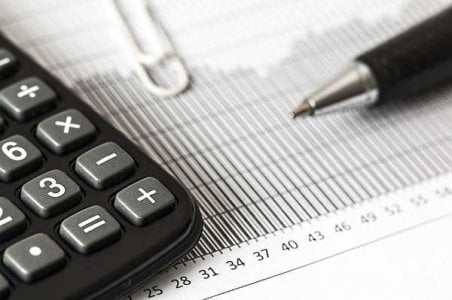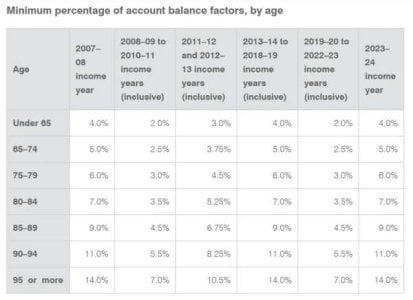Could you lose your tax break? Warning for pensioners withdrawing too little from superannuation!
Buckle up because we're diving into the complex world of superannuation income phases and tax breaks.
Yes, we know it sounds dreadful, but it's worth the read when tax breaks and your hard-earned money are at stake.
As of July 1, the 50 per cent minimum pension drawdown ‘discount’ has been removed. Simply put, this allowed superannuants to withdraw only half of what they usually ‘had to’, based on their age.
Now, for those sitting on a defined-benefit pension with guarantees on income levels, you can relax.

But for the rest dealing with allocated pensions, account-based ones, as well as market-linked and transition to retirement pensions, you’ll want to pay attention.
This income concession was set in place during the initial wave of COVID-related financial panic when super balances took a hit. However, as stock markets stabilise, the concession has now been revoked.
But what's the concern? Well, fall short of the minimum pension withdrawal, and you're looking at a financial penalty.
The Australian Taxation Office (ATO) will consider your income stream to have stopped, treating all payments as super lump sum amounts.
The shortfall cannot be rectified at the beginning of the next financial year either.
The ATO doesn’t work that way. You get super tax concessions in the retirement phase that equates to 0 per cent tax on earnings compared to 15 per cent while you're still in the accumulation phase.
So, the government wants you to go ahead and withdraw that money.
Super funds have their trustees looking after compliance with the minimum pension requirements. If that's not you, hopefully, you'll get a heads-up. However, be prepared.

Even if you make the right withdrawals next year and play by the books, starting a new pension would be in order. This means trustees must value the assets again in the current market and re-calculate the new minimum pensions.
Now, you must be thinking, 'What are these reinstated withdrawal requirements?'
According to the ATO’s schedule, these rates depend on your age.
Your age and account balance on July 1 in the financial year when the payment is made determines the balance. If your pension starts after July 1, your balance on the commencement day will be considered to calculate the minimum payment.
For instance, if you are 64 years old and started an income stream on July 1, 2023, with $600,000, your minimum pension amount would be $600,000 x 4 per cent = $24,000.
So, you must withdraw $24,000 across the 2023-24 financial year.
To find the new age-based rates, please refer to the image below, which outlines the minimum percentage of account balance factors based on age:
Remember, it doesn’t matter how you receive your pension payments—monthly, quarterly, or even less frequently—the annual minimum remains the same.
 Despite how complex this might seem, the key takeaway is ensuring you meet the minimum pension withdrawal requirements to keep your tax breaks intact.
Despite how complex this might seem, the key takeaway is ensuring you meet the minimum pension withdrawal requirements to keep your tax breaks intact.
We hope this sheds some light on the updated pension drawdown rules.
Members, what are your overall impressions of the updated pension drawdown rules? Share your thoughts on how this may impact you and your financial planning for retirement.
Yes, we know it sounds dreadful, but it's worth the read when tax breaks and your hard-earned money are at stake.
As of July 1, the 50 per cent minimum pension drawdown ‘discount’ has been removed. Simply put, this allowed superannuants to withdraw only half of what they usually ‘had to’, based on their age.
Now, for those sitting on a defined-benefit pension with guarantees on income levels, you can relax.

Act now to avoid being caught out, as the pension drawdown minimums have changed. Image by jhenning from pixabay
But for the rest dealing with allocated pensions, account-based ones, as well as market-linked and transition to retirement pensions, you’ll want to pay attention.
This income concession was set in place during the initial wave of COVID-related financial panic when super balances took a hit. However, as stock markets stabilise, the concession has now been revoked.
But what's the concern? Well, fall short of the minimum pension withdrawal, and you're looking at a financial penalty.
The Australian Taxation Office (ATO) will consider your income stream to have stopped, treating all payments as super lump sum amounts.
The shortfall cannot be rectified at the beginning of the next financial year either.
The ATO doesn’t work that way. You get super tax concessions in the retirement phase that equates to 0 per cent tax on earnings compared to 15 per cent while you're still in the accumulation phase.
So, the government wants you to go ahead and withdraw that money.
Super funds have their trustees looking after compliance with the minimum pension requirements. If that's not you, hopefully, you'll get a heads-up. However, be prepared.

As of July 1, the 50 per cent minimum pension drawdown ‘discount’ has been removed. Image by stevepb from pixabay
Even if you make the right withdrawals next year and play by the books, starting a new pension would be in order. This means trustees must value the assets again in the current market and re-calculate the new minimum pensions.
Now, you must be thinking, 'What are these reinstated withdrawal requirements?'
According to the ATO’s schedule, these rates depend on your age.
Your age and account balance on July 1 in the financial year when the payment is made determines the balance. If your pension starts after July 1, your balance on the commencement day will be considered to calculate the minimum payment.
For instance, if you are 64 years old and started an income stream on July 1, 2023, with $600,000, your minimum pension amount would be $600,000 x 4 per cent = $24,000.
So, you must withdraw $24,000 across the 2023-24 financial year.
To find the new age-based rates, please refer to the image below, which outlines the minimum percentage of account balance factors based on age:
Remember, it doesn’t matter how you receive your pension payments—monthly, quarterly, or even less frequently—the annual minimum remains the same.
Key Takeaways
- The 50 per cent minimum pension drawdown 'discount' that allowed superannuants to cut their withdrawals in half has been removed as of July 1.
- If the minimum pension amount required is not withdrawn in any given financial year, the Australian Taxation Office (ATO) deems that the income stream has stopped, and all payments made during that year are treated as super lump sums.
- The tax concession in the retirement phase is a 0 per cent tax on earnings. If not withdrawn accordingly, there will be financial consequences.
- The super fund trustee is responsible for ensuring minimum pension requirements. Even if the necessary withdrawals are made the following tax year, you have effectively started a new pension, and the trustee must re-value assets in the current market conditions and recalculate the minimum pension.
We hope this sheds some light on the updated pension drawdown rules.
Members, what are your overall impressions of the updated pension drawdown rules? Share your thoughts on how this may impact you and your financial planning for retirement.








